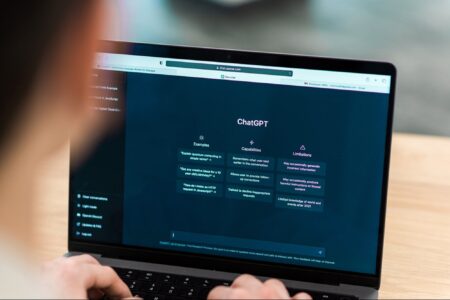Entrepreneur
Imagine if you could unlock each team member’s full potential — not by working harder, but by working smarter. What if, instead of trying to mold your team into a one-size-fits-all approach, you could tap into their natural strengths to create a workplace where everyone thrives?
By uncovering your employees’ unique traits, preferences and working styles, you can align their strengths with roles that set them — and your business — up for success. This isn’t just about getting more done; it’s about creating a culture where everyone feels valued, engaged and empowered to contribute their best work.
As the founder of ButterflyMX, an access control company with over 200 employees, I’ve learned how to do this to create teams that operate harmoniously. By leveraging individual strengths, workers are more productive, innovative and collaborative. When leaders take the time to know their people deeper, they build trust, reduce friction and unlock a synergy that transforms good teams into great ones.
Related: 3 Ways to Learn More About Your Team and How They Work
The science of personality types
Tools like Myers-Briggs (MBTI), DiSC or the Big Five personality traits aren’t just trendy buzzwords — they’re backed by decades of research into how personality influences behavior and performance. These frameworks offer a structured way to understand how people think, communicate and problem-solve.
So, why do they work? Personality assessments reveal much more than surface-level traits. They uncover communication preferences (detailed instructions vs. broad guidelines), problem-solving styles (those who dive into data vs. those who trust their instincts) and even work environment preferences (collaboration vs. solitude). With this knowledge, leaders can create an environment where everyone performs at their best.
However, let’s clear up a common misconception: Personality assessments are starting points, not rigid definitions. They’re not about shutting people into boxes but about opening doors. Everyone is unique, and these tools help you start the conversation about better understanding, motivating and supporting your team.
Identifying strengths through personality types
Once you understand personality types, the next step is identifying your team members’ strengths.
Each personality brings unique value to the table:
-
Extroverts excel in client-facing roles, brainstorming sessions and group projects. They bring energy and enthusiasm that can galvanize a team.
-
Detail-oriented individuals shine in areas like project management and quality assurance, where precision and organization are critical.
-
Big-picture thinkers thrive in strategy and innovation, tackling abstract challenges and envisioning long-term goals.
For example, imagine a property management company needing help to meet tight deadlines. A savvy manager noticed that one team member, who loved structure and deadlines, excelled when given detailed project plans. Meanwhile, another, known for creative problem-solving, flourished when tasked with brainstorming solutions to roadblocks.
By aligning these tasks with their natural strengths, the manager boosted efficiency and improved team morale. Identifying strengths isn’t just about improving productivity — it’s about helping people feel seen, valued and capable of achieving their best work.
Related: How Leaders Can Use Myers-Briggs, DISC and FIRO-B Tests to Drive Corporate Culture
Leveraging personality types to maximize team performance
Tailored leadership:
Understanding personality types allows leaders to align tasks with individual preferences. If someone thrives in a structured environment, give them a detailed roadmap. But if they prefer creative freedom, provide a clear objective and let them run with it. By tailoring your leadership style, you ensure every team member feels supported and empowered.
Enhancing collaboration:
When leaders strategically pair teammates with complementary strengths, the results can be transformative. For instance, pairing a visionary with a detail-oriented planner can lead to balanced decision-making and flawless execution. By appreciating differences, you foster collaboration instead of conflict.
Motivation strategies:
Personality insights also help you motivate your team. Does an employee thrive on public recognition? Celebrate their wins in team meetings. Do they prefer quiet acknowledgment? Send them a personalized note of appreciation. When leaders motivate authentically, team members are more engaged and loyal.
The challenges of personality-based leadership
While personality-based leadership offers many benefits, it has its challenges.
-
Avoiding pitfalls: Don’t pigeonhole employees into specific roles based solely on their personality type. People are multifaceted, and roles should evolve as their skills grow.
-
Balancing strengths and growth: Encourage employees to leverage their strengths while stepping out of their comfort zones. For example, introverts who prefer solitary work can benefit from occasional group projects to build communication skills.
By using personality insights as a guide — not a rulebook — you’ll strike the right balance between leveraging strengths and fostering growth.
Actionable steps for leaders
To integrate personality-based strategies into your leadership style, follow these steps:
-
Choose the right tool: Whether it’s MBTI, DiSC or another framework, pick an assessment that aligns with your organization’s goals.
-
Facilitate open discussions: Share results with your team and invite them to discuss how these insights reflect their working style.
-
Align roles with strengths: Use the insights to assign tasks and responsibilities that fit each team member’s natural abilities.
-
Review and adapt: Reassess periodically. Teams evolve, and your strategies should, too.
Implementing these steps doesn’t require an overhaul — just a willingness to adapt and prioritize your team’s needs.
Related: How to Manage These 6 Different Workplace Personality Types
Your team’s greatest asset isn’t just their skill set; it’s the unique perspectives and energy each individual brings. By taking the time to understand their personality types, you’re not just building a more effective team — you’re creating a workplace where people feel valued, motivated and inspired to do their best.
Explore personality assessments, start the conversation, and watch your team transform into a powerhouse of collaboration, innovation and success.
Read the full article here












